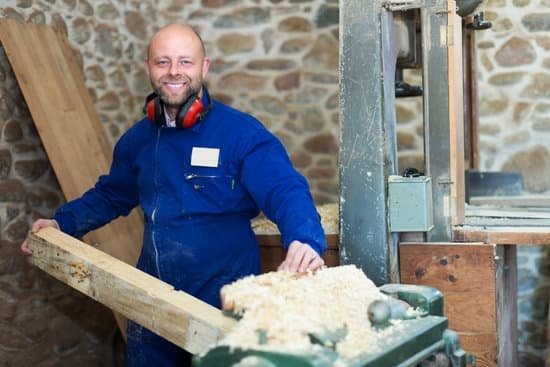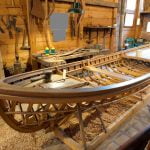What size building for beginner woodworking is a crucial consideration that can greatly impact the overall quality of work. The space in which woodworking projects are undertaken plays a significant role in the efficiency, safety, and productivity of the woodworker. In this article, we will delve into the considerations for beginners when it comes to setting up their woodworking space, from assessing space needs to budget considerations and future expansion planning.
Assessing the space needs for woodworking projects is essential as different types of projects may require varying amounts of space. By understanding these requirements, beginners can ensure they have adequate room for their tools, materials, and finished projects without feeling cramped or limited in their creativity. Space considerations also play a pivotal role in ensuring proper ventilation and safety measures are in place, which will be explored later in this article.
Furthermore, budget considerations are vital for beginners as they embark on their woodworking journey. From the costs associated with building a woodworking space to maintaining it, there are several factors that need to be taken into account.
Effective management of budget can help beginners create an optimized workspace without overspending while still meeting their needs and ensuring a conducive environment for honing their craft. Throughout this article, we will provide practical advice and insights to guide newcomers in making informed decisions about the size and layout of their woodworking building.
Assessing Space Needs
When it comes to woodworking, having the right size building is crucial for beginners to effectively pursue their projects. Assessing space needs is an important aspect of setting up a woodworking space, as different types of woodworking projects require varying amounts of space.
For smaller and simpler projects such as crafting small furniture pieces or basic carpentry work, a compact workspace may suffice. However, for larger and more intricate projects like cabinetry or creating larger pieces of furniture, a more spacious area would be ideal.
For example, a beginner looking to start with smaller-scale projects such as making picture frames or shelves may only need a workspace that is around 100-200 square feet. On the other hand, individuals interested in tackling more complex projects like building tables or cabinets will likely require at least 400-600 square feet of space to comfortably maneuver and work on their creations.
Having enough space to comfortably move around and properly store materials and tools is essential for woodworkers. It also allows for better organization and workflow efficiency, which can ultimately impact the quality of the finished products. Additionally, considering future project aspirations and allowing room for growth within the woodworking hobby is an important factor when determining what size building would be suitable for beginner woodworking endeavors.
| Woodworking Project | Space Typically Required (In Square Feet) |
|---|---|
| Small furniture pieces or basic carpentry work | 100-200 |
| Cabinetry or larger pieces of furniture | 400-600 |
Budget Considerations
When it comes to setting up a woodworking space, one of the key considerations for beginners is the budget. The size of the building for beginner woodworking will significantly impact the overall cost, as larger spaces typically require more materials and resources for construction and maintenance. Here are some budget considerations and tips for beginners to effectively manage their finances when establishing a woodworking space:
1. Building materials: Depending on the size of the building, beginners will need to budget for construction materials such as lumber, insulation, windows, doors, and roofing. It’s important to carefully plan and estimate the quantity of materials needed to avoid overspending.
2. Utilities and maintenance: A larger woodworking space will incur higher utility costs for heating, cooling, and lighting. Additionally, ongoing maintenance expenses may also be greater for a larger building. Beginners should factor in these recurring costs when planning their budget.
3. Cost-saving tips: To manage their budget effectively, beginners can consider cost-saving measures such as using reclaimed or recycled materials for construction, investing in energy-efficient lighting and appliances to reduce utility bills, and performing regular maintenance to prevent costly repairs down the line.
By carefully assessing their budget needs and implementing cost-saving strategies, beginners can create a woodworking space that meets their size requirements while staying within their financial means. This thoughtful approach will not only ensure a well-equipped workspace but also set the stage for successful and sustainable woodworking endeavors in the long run.
Tools and Equipment
When it comes to setting up a woodworking space, one of the most crucial considerations is the tools and equipment needed for the projects at hand. For beginners, it’s important to start with the essentials and gradually build up their collection as their skills and projects become more complex. The size of the building will also play a significant role in determining what tools and equipment can be accommodated comfortably.
Essential Tools and Equipment
Beginner woodworkers will require a set of basic hand tools such as saws, chisels, hammers, screwdrivers, measuring tools, and clamps. In addition to hand tools, power tools like a table saw, circular saw, drill press, router, and sander are essential for many woodworking projects. These tools not only require adequate storage space but also need sufficient room for safe operation.
Space Requirements
The amount of space needed for storing and using woodworking tools and equipment will depend on the type of projects beginners plan to undertake. Larger power tools like table saws and drill presses will require dedicated floor space with ample clearance around them for safe operation.
Considerations should also be made for workbenches or assembly tables that provide sufficient space for project layout and assembly. For smaller hand tools, an organized storage system such as wall-mounted tool racks or rolling tool cabinets can help conserve valuable floor space.
Optimizing Space Usage
With limited space in a beginner woodworking building, it’s important to optimize the layout to make the most of the available area. This may involve using vertical storage solutions for hand tools or investing in multifunctional workstations that can accommodate multiple tasks in a compact footprint.
Additionally, incorporating mobile bases for larger power tools can enable them to be moved out of the way when not in use, freeing up more workspace. By carefully planning the placement and storage of tools and equipment within the building, beginners can create a functional and efficient woodworking environment regardless of its size.
By assessing their specific needs and making smart choices regarding storage solutions and tool organization, beginner woodworkers can effectively utilize any size building for their projects while creating a safe working environment.
Workspace Layout
When it comes to setting up a woodworking space, beginners may often overlook the importance of an efficient and productive layout. However, the layout of your workspace can significantly impact your workflow and the quality of your work. In this section, we will provide practical advice on how to optimize the layout of a woodworking space to maximize efficiency and productivity.
Utilize Vertical Storage
One effective way to maximize space in a woodworking workshop is to utilize vertical storage. This means making use of wall space for storing tools, materials, and equipment. Installing shelves, pegboards, and tool racks can free up valuable floor space and keep everything organized and easily accessible.
Create Dedicated Workstations
To enhance productivity, consider creating dedicated workstations for specific tasks. For example, have a designated area for cutting and measuring, another for assembly, and another for sanding and finishing. This not only streamlines your workflow but also helps maintain cleanliness and organization in your workspace.
Consider Workflow
When planning the layout of your woodworking space, carefully consider the natural flow of work. Position tools and workstations in a logical sequence that minimizes unnecessary movement. For instance, place the table saw near the lumber storage area and assembly station to minimize transporting heavy materials across the workshop.
By implementing these practical tips for optimizing the layout of your woodworking space, beginners can set themselves up for success in their woodworking endeavors. With careful planning and consideration of space utilization, a well-organized workshop can enhance efficiency, productivity, and ultimately, the quality of your woodworking projects.
Ventilation and Safety
When it comes to setting up a woodworking space, proper ventilation and safety measures are crucial considerations for beginners. The size of the building can have a significant impact on these factors, so it’s important to plan accordingly.
Ventilation is essential in a woodworking environment to ensure that harmful fumes and dust particles are properly extracted from the workspace. Without adequate ventilation, woodworkers may be exposed to potentially harmful substances that can affect their health in the long run. Additionally, poor ventilation can lead to a buildup of dust and debris, which can create hazardous conditions and increase the risk of fire or accidents.
In terms of safety measures, having enough space in the building allows for the proper storage of materials and equipment, reducing clutter and potential hazards. It also provides room for creating designated areas for cutting, sanding, and assembling projects, minimizing the risk of accidents and injuries. Furthermore, a well-ventilated and spacious workshop creates a more comfortable working environment, allowing beginners to focus on their craft without feeling restricted or unsafe.
For beginner woodworkers who may not have much experience with setting up a woodworking space, here are some practical tips to ensure proper ventilation and safety:
- Install an exhaust fan or air filtration system to maintain good air quality.
- Use personal protective equipment such as goggles, gloves, and masks when working with power tools or finishing products.
- Keep work areas well-lit and free from obstacles or potential tripping hazards.
- Regularly inspect and maintain equipment to ensure safe operation.
- Plan for future expansion by considering factors such as increased material storage needs or additional machinery as skills improve.
Future Expansion
As beginner woodworkers gain more experience and confidence in their craft, they may find themselves taking on more complex projects or working with larger pieces of wood. This natural progression can lead to an increased need for space within their woodworking building. Therefore, it is important for beginners to consider potential future expansion when deciding on the size of their initial woodworking space.
One key factor to consider when planning for future expansion is the type of woodworking projects that beginners aspire to undertake. For example, if a beginner currently focuses on small-scale furniture pieces but has ambitions to move into cabinetry or custom carpentry in the future, they will need to account for larger workbenches, additional storage for materials, and possibly even space for specialized equipment such as table saws or planers.
In addition to project type, beginners should also think about how their woodworking business might grow over time. Will they eventually be taking on commissioned pieces? Will they need space for finishing and assembly separate from their main workspace? These are all important questions to ask when determining what size building will best accommodate both current needs and future ambitions.
| Factor | Consideration |
|---|---|
| Type of Projects | Small-scale vs. large-scale projects |
| Business Growth | Potential expansion into commissioned pieces or specialized services |
Case Studies
In conclusion, deciding on the right size building for beginner woodworking is a crucial step in setting up a successful and efficient woodworking space. The size of the building can significantly impact not only the quality of work produced but also the overall experience of woodworking as a beginner.
Assessing space needs is essential, as different types of woodworking projects require varying amounts of space. From small-scale projects like jewelry boxes to larger pieces like tables and chairs, having the right amount of room to maneuver and work comfortably can make all the difference in the outcome.
Additionally, budget considerations play a significant role in determining the size of the building for beginner woodworking. Managing costs effectively when setting up and maintaining a woodworking space is important for beginners.
Understanding the tools and equipment needed for woodworking projects and how much space they require for storage and use is also crucial. Optimizing workspace layout to maximize efficiency and productivity is key, as well as prioritizing proper ventilation and safety measures in a woodworking environment, which can be impacted by building size.
Looking towards future expansion is another important factor to consider when thinking about what size building is best for beginner woodworking. As beginners progress in their craft, they may find themselves taking on more ambitious projects that require additional space.
Anticipating and planning for future needs in terms of space can save time and money down the line. Ultimately, choosing the right size building for beginner woodworking involves careful consideration of practical needs, budget constraints, safety measures, and potential growth in one’s woodworking ventures.
Frequently Asked Questions
What Is a Good Size for a Hobby Woodworking Shop?
A good size for a hobby woodworking shop depends on the space you have available and the kind of projects you want to tackle. Generally, a shop around 10×15 feet can provide enough room for various tools and work surfaces without feeling too cramped.
What Is a Good Size Shed for Woodworking?
When it comes to a shed for woodworking, a good size would be around 12×16 feet. This provides enough space for storing tools, materials, and partially finished projects, while still leaving room to move around and work on various projects comfortably.
What Is the First Rule of Woodworking?
The first rule of woodworking is safety. Before starting any project, it’s crucial to familiarize yourself with the proper way to handle tools, wear protective gear, and ensure that your workspace is organized and free from potential hazards. Taking safety seriously is essential in woodworking.

Hi everyone! I’m a woodworker and blogger, and this is my woodworking blog. In my blog, I share tips and tricks for woodworkers of all skill levels, as well as project ideas that you can try yourself.





